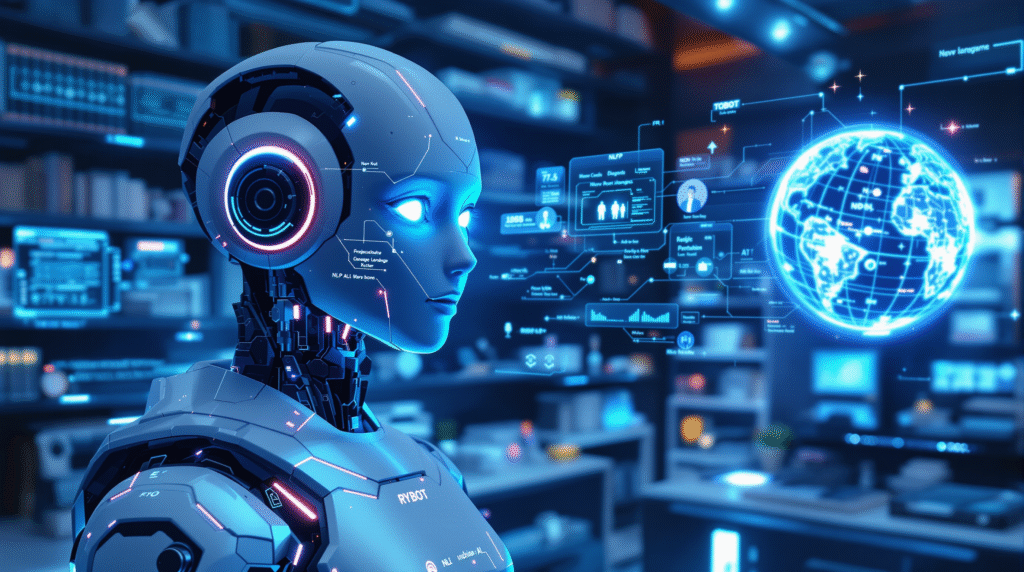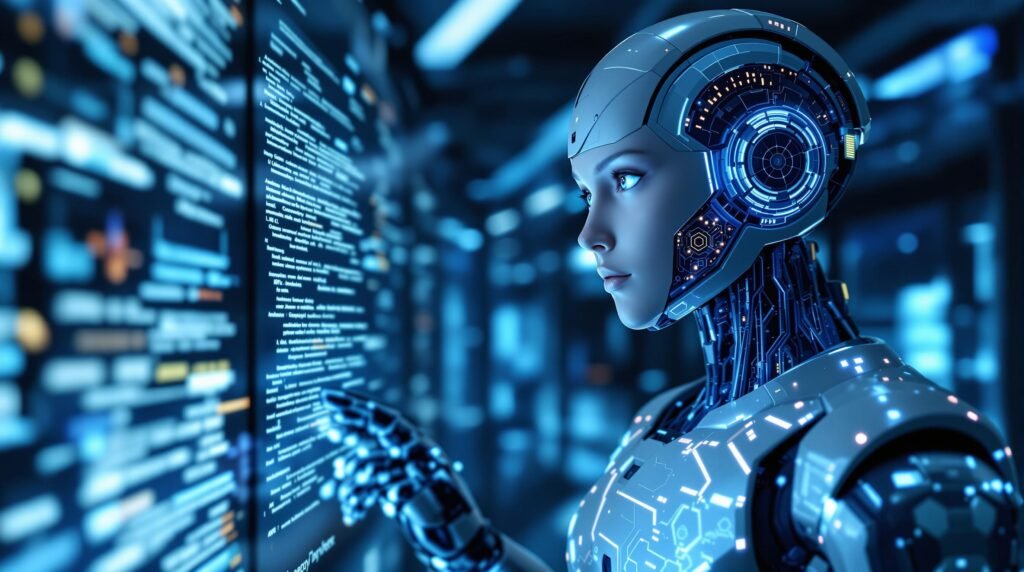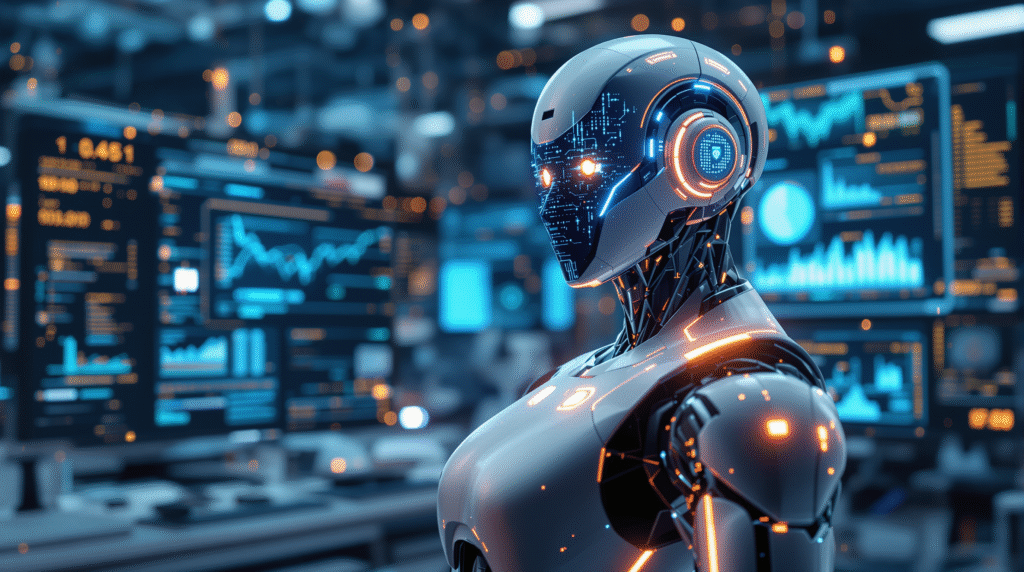Introduction
The Rise of AI in Manufacturing
Artificial intelligence (AI) is transforming the manufacturing sector, with robotics at the forefront of this revolution. Over the past decade, manufacturers have increasingly adopted AI-driven robots to automate repetitive tasks, improve precision, and boost productivity. This shift is not just about replacing human labor; it’s about enabling new levels of efficiency, flexibility, and innovation that were previously unattainable. AI-powered robots can now handle complex assembly, quality inspection, predictive maintenance, and even adapt to changing production requirements in real time.
The Role of Robots in Modern Factories
Robots have become essential components of modern manufacturing lines. They are used for welding, painting, assembly, packaging, and material handling, among many other tasks. With the integration of AI, these robots are no longer limited to pre-programmed routines. Instead, they can learn from data, adapt to new scenarios, and collaborate safely with human workers. This evolution has led to the rise of “smart factories,” where interconnected robots and systems communicate and optimize production autonomously.
Why Scale Matters: Efficiency, Customization, and Innovation
Scaling AI in robot manufacturing is crucial for several reasons. First, it enables manufacturers to achieve economies of scale, reducing costs and increasing output without sacrificing quality. Second, large-scale AI deployment allows for greater customization, as robots can be quickly reprogrammed or retrained to handle new products or variations. Finally, scaling AI fosters innovation by enabling rapid experimentation and deployment of new manufacturing techniques, such as generative design, real-time defect detection, and adaptive supply chain management.
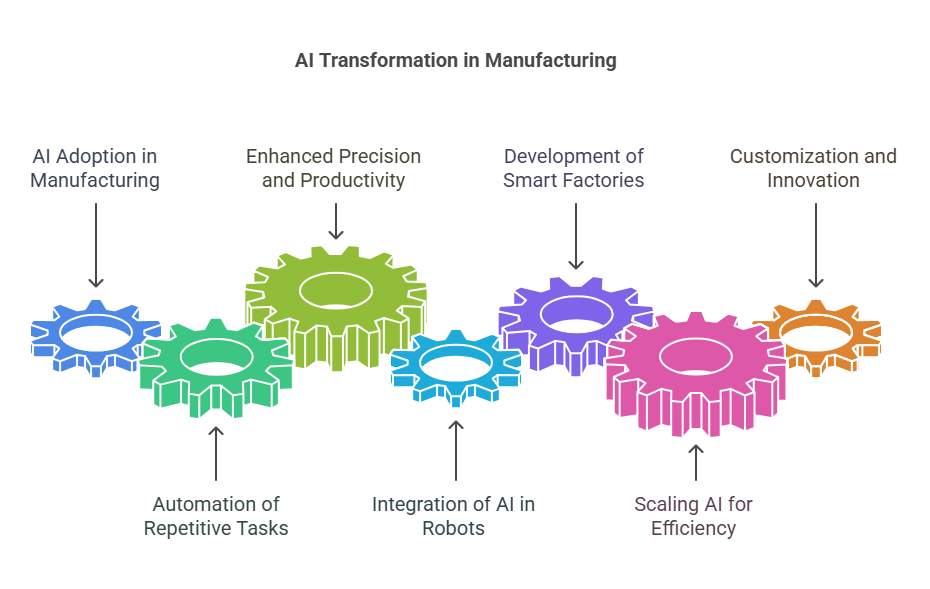
Challenges in Implementing AI in Robot Manufacturing at Scale
Data Acquisition and Management
One of the most significant challenges in large-scale AI deployment for robot manufacturing is managing the vast and diverse data required for effective machine learning. Modern factories generate enormous volumes of data from sensors, cameras, and production systems. This data comes in various formats and at high velocity, making it difficult to aggregate, clean, and standardize. Ensuring data quality is critical, as poor or mislabeled data can lead to unreliable models and costly production errors. Additionally, data security and privacy must be maintained, especially when handling sensitive information or complying with regulations such as GDPR. Effective data management strategies, including robust data pipelines, automated labeling, and secure storage, are essential for success.
Model Development and Training
Developing and training AI models for robot manufacturing at scale presents unique technical hurdles. The computational resources required for training deep learning models on large datasets can be immense, often necessitating distributed computing environments with powerful GPUs or TPUs. Selecting the right algorithms and optimizing them for specific manufacturing tasks is complex, as is ensuring that models generalize well to new data and remain robust in the face of changing production conditions. Overfitting, underfitting, and model drift are common issues that must be addressed through careful validation, regular retraining, and continuous monitoring.
Integration and Interoperability
Integrating AI models into existing manufacturing environments is rarely straightforward. Many factories rely on legacy systems and proprietary protocols, making interoperability a significant challenge. AI solutions must be able to communicate with a wide range of hardware and software, from programmable logic controllers (PLCs) to enterprise resource planning (ERP) systems. Real-time decision-making is often required, demanding low-latency inference and reliable data exchange. Achieving seamless integration may involve developing custom middleware, adopting open standards, and investing in simulation environments to test new solutions before deployment.
Deployment and Maintenance
Deploying AI at scale in robot manufacturing requires robust infrastructure to ensure scalability, reliability, and minimal downtime. Models must be deployed in a way that supports high availability and can handle fluctuating workloads. Ongoing maintenance is critical, as models can degrade over time due to data drift or changes in the production environment. Continuous monitoring, diagnostics, and automated retraining pipelines help maintain model performance and reduce the risk of unexpected failures. Additionally, dynamic resource allocation and containerization technologies, such as Docker and Kubernetes, can simplify deployment and scaling across multiple production lines.
Ethical and Societal Considerations
As AI becomes more prevalent in robot manufacturing, ethical and societal challenges come to the forefront. Bias in training data can lead to unfair or unsafe outcomes, while a lack of transparency in AI decision-making can erode trust among workers and stakeholders. Ensuring explainability and accountability is essential, particularly in safety-critical applications. There are also concerns about job displacement and the need for workforce transition, as automation changes the nature of manufacturing roles. Addressing these issues requires a commitment to responsible AI practices, including bias detection, explainable AI methods, and human-in-the-loop systems to ensure oversight and fairness.
Solutions and Strategies for Scaling AI in Robot Manufacturing
Data-Centric Approaches
Scaling AI in robot manufacturing starts with robust data management. High-quality, well-governed data is the foundation for effective AI systems. Manufacturers should implement data governance frameworks to ensure data consistency, security, and compliance. Automated data labeling and augmentation techniques, such as using pre-trained models for initial labeling or leveraging synthetic data generation, can accelerate dataset creation and improve model performance. Federated learning and edge computing are also valuable, allowing models to be trained on distributed data sources without compromising privacy or requiring massive data transfers. These strategies help manufacturers efficiently manage the volume, variety, and velocity of data generated on the factory floor.
Model Optimization and Acceleration
To meet the demands of real-time manufacturing environments, AI models must be both accurate and efficient. Hardware acceleration using GPUs or TPUs can significantly reduce training and inference times, enabling rapid deployment and adaptation. Techniques like model compression and pruning help reduce the computational footprint of AI models, making them suitable for deployment on resource-constrained robotic systems. Transfer learning and fine-tuning allow manufacturers to leverage existing pre-trained models, adapting them to specific tasks with less data and computational effort. This not only speeds up development but also improves model robustness in diverse production scenarios.
Integration and Interoperability Solutions
Seamless integration of AI into existing manufacturing systems is essential for large-scale deployment. Open standards and APIs facilitate communication between AI models, robots, and legacy systems, reducing the complexity of integration projects. Middleware and integration platforms can bridge gaps between different hardware and software components, ensuring smooth data flow and real-time decision-making. Digital twins and simulation environments provide a safe space to test and validate AI-driven processes before deploying them on the factory floor, minimizing risks and downtime.
MLOps for Deployment and Maintenance
MLOps (Machine Learning Operations) practices are critical for managing the lifecycle of AI models in production. Automated CI/CD (Continuous Integration/Continuous Deployment) pipelines streamline the process of testing, validating, and deploying new models, reducing manual effort and the risk of errors. Real-time monitoring and alerting systems track model performance, data drift, and system health, enabling proactive maintenance and rapid response to issues. Dynamic resource allocation and scaling, often managed through containerization technologies like Docker and Kubernetes, ensure that AI workloads can adapt to changing production demands without service interruptions.
Responsible AI Frameworks
As AI becomes more integral to manufacturing, responsible AI practices are essential to ensure fairness, transparency, and trust. Bias detection and mitigation techniques help identify and address potential sources of unfairness in training data or model predictions. Explainable AI (XAI) methods provide insights into how models make decisions, which is crucial for safety-critical applications and regulatory compliance. Human-in-the-loop systems combine the strengths of AI and human expertise, allowing operators to oversee, validate, and intervene in automated processes when necessary.
Case Studies: Successful Implementations of AI in Robot Manufacturing
Automated Quality Control
One of the most impactful applications of AI in robot manufacturing is automated quality control. Traditional quality inspection methods often rely on manual checks or simple rule-based systems, which can be slow and prone to human error. By integrating AI-powered computer vision systems with robotic arms, manufacturers can achieve real-time, high-precision inspection of products on the assembly line. These systems use deep learning models trained on thousands of images to detect defects, measure tolerances, and ensure consistency. The result is a significant reduction in defective products, faster feedback loops, and the ability to adapt inspection criteria as new product variants are introduced. For example, a leading automotive manufacturer implemented an AI-driven visual inspection system that reduced false positives by 30% and improved overall product quality.
Predictive Maintenance
AI-driven predictive maintenance is transforming how manufacturers manage their robotic fleets. Instead of relying on scheduled maintenance or reacting to breakdowns, AI models analyze sensor data from robots to predict when components are likely to fail. This approach leverages machine learning algorithms that process data such as vibration, temperature, and operational cycles to identify patterns indicative of wear or malfunction. By scheduling maintenance only when needed, manufacturers can minimize downtime, extend the lifespan of equipment, and reduce maintenance costs. In one case, a global electronics manufacturer used AI-based predictive maintenance to decrease unplanned downtime by 40%, resulting in substantial cost savings and improved production efficiency.
Adaptive Robotics
Adaptive robotics represents a new frontier in manufacturing, where robots equipped with AI can learn and adjust to new tasks without extensive reprogramming. Using reinforcement learning and transfer learning techniques, these robots can optimize their actions based on feedback from the environment. For instance, in a consumer electronics factory, adaptive robots were deployed to handle the assembly of multiple product lines. The AI models enabled the robots to quickly adapt to changes in product design, reducing the time required for retooling and increasing overall flexibility. This adaptability is especially valuable in industries with high product variability or frequent design updates.
Supply Chain Optimization
AI is also making a significant impact on supply chain management within robot manufacturing. By analyzing large volumes of data from suppliers, inventory systems, and production schedules, AI algorithms can optimize procurement, inventory levels, and logistics. This leads to reduced lead times, lower inventory costs, and improved responsiveness to market demand. For example, a robotics manufacturer implemented an AI-powered supply chain optimization platform that integrated real-time data from suppliers and production lines. The system dynamically adjusted orders and inventory, resulting in a 20% reduction in excess stock and faster delivery times to customers.
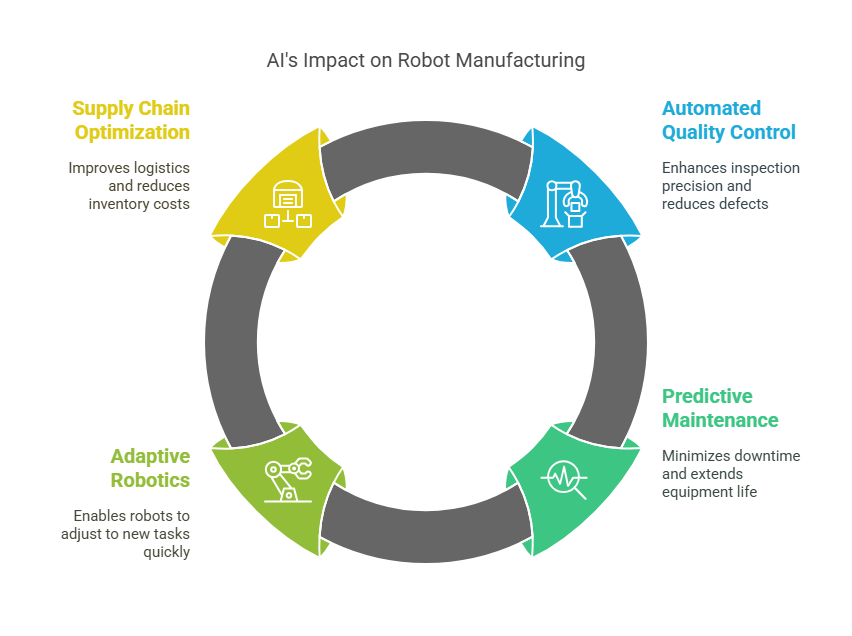
Best Practices for MLOps in Large-Scale Robot Manufacturing
Data Management and Versioning
Effective data management is the backbone of any successful AI deployment in robot manufacturing. At scale, manufacturers must handle vast, dynamic datasets generated by sensors, cameras, and production systems. Best practices include implementing robust data pipelines that automate data collection, cleaning, and transformation. Versioning is equally critical: every dataset, annotation, and model iteration should be tracked, much like code in software engineering. This enables teams to revert to previous versions, conduct A/B testing, and ensure full reproducibility. Modern data platforms offer features such as change tracking, branching, and merging of datasets, which are essential for collaborative development and regulatory compliance.
Model Development, Testing, and Reproducibility
Developing robust AI models for robot manufacturing requires a disciplined approach to experimentation and validation. Teams should use experiment tracking tools to log data sources, feature selections, model parameters, and performance metrics for each run. This not only simplifies comparison and selection of the best models but also ensures that results can be reproduced reliably. Automated testing pipelines should validate models against diverse scenarios, including edge cases and rare events. Reproducibility is further enhanced by capturing the full software environment—such as library versions and hardware dependencies—using tools like Docker or Conda environments.
Deployment and Runtime Optimization
Deploying AI models in production environments demands careful attention to runtime performance and reliability. Containerization technologies, such as Docker and Kubernetes, allow for consistent deployment across heterogeneous hardware and software environments. These tools enable blue-green deployments, elastic scaling, and rapid rollback in case of issues. For resource-constrained environments, model optimization techniques like quantization, pruning, and knowledge distillation can significantly reduce latency and memory usage without sacrificing accuracy. It’s also important to monitor resource consumption and set up automated alerts for anomalies, ensuring that production systems remain stable and efficient.
Continuous Monitoring and Automated Retraining
Once deployed, AI models in robot manufacturing must be continuously monitored to detect data drift, performance degradation, or unexpected behavior. Monitoring systems should track key metrics such as accuracy, latency, and error rates, and provide dashboards for real-time visibility. When significant drift or degradation is detected, automated retraining pipelines can be triggered to update models with new data, minimizing downtime and maintaining high performance. This closed feedback loop is essential for adapting to changing production conditions and ensuring long-term reliability.
Governance, Compliance, and Responsible AI
Large-scale AI deployment in manufacturing must adhere to strict governance and compliance standards, especially in regulated industries. Best practices include maintaining detailed documentation of model development, deployment, and monitoring processes. Automated tools can generate model factsheets, capturing metadata such as training data, performance metrics, and explainability reports. Explainable AI techniques, such as Shapley values or partial dependence plots, help ensure transparency and fairness in model decisions. Access controls and audit trails are necessary to manage permissions and track changes, supporting both internal governance and external regulatory requirements.
Collaboration and Communication
Successful MLOps in robot manufacturing relies on seamless collaboration between data scientists, engineers, operators, and business stakeholders. Shared platforms and tools should facilitate communication, task allocation, and knowledge transfer. Clear documentation, user-friendly APIs, and well-defined processes help bridge the gap between development and operations teams. Regular cross-functional reviews and feedback loops ensure that AI solutions align with business goals and production realities.
Future Trends and Innovations in Large-Scale AI for Robot Manufacturing
The Rise of Foundation Models and Generative AI
The next wave of AI in robot manufacturing is being driven by foundation models and generative AI. Foundation models, such as large language models (LLMs) and vision transformers, are pre-trained on massive datasets and can be adapted to a wide range of tasks with minimal additional data. In manufacturing, these models enable robots to understand complex instructions, interpret visual data, and even generate new designs or process optimizations. Generative AI, including technologies like generative adversarial networks (GANs), is being used to create synthetic data for training, simulate production scenarios, and design innovative components. This shift allows manufacturers to accelerate R&D, reduce costs, and respond more flexibly to market demands.
Autonomous and Collaborative Robotics
Robots are becoming increasingly autonomous, capable of making decisions and adapting to new situations without human intervention. Advances in reinforcement learning and real-time sensor integration allow robots to optimize their actions on the fly, improving efficiency and safety. Collaborative robots, or cobots, are designed to work alongside humans, learning from their actions and sharing tasks in dynamic environments. These systems use AI to interpret gestures, predict intentions, and ensure safe interaction, making it possible to automate more complex and variable processes than ever before.
Edge AI and Real-Time Processing
As manufacturing environments demand faster response times and greater reliability, edge AI is gaining traction. By deploying AI models directly on robots or local devices, manufacturers can achieve real-time decision-making without relying on cloud connectivity. This reduces latency, enhances data privacy, and ensures continuous operation even in environments with limited internet access. Edge AI also enables distributed intelligence, where multiple robots and sensors collaborate to optimize workflows and adapt to changing conditions in real time.
Digital Twins and Simulation
Digital twins—virtual replicas of physical assets and processes—are revolutionizing how manufacturers design, test, and optimize robot-driven production lines. By integrating AI with digital twins, companies can simulate new manufacturing processes, predict equipment failures, and optimize resource allocation before making changes in the real world. This approach reduces downtime, lowers costs, and accelerates innovation by enabling rapid experimentation in a risk-free environment.
AI-Driven Customization and Mass Personalization
AI is making it possible to move beyond mass production toward mass personalization. Robots equipped with advanced AI can quickly switch between product variants, adjust to custom specifications, and even learn from customer feedback. This flexibility allows manufacturers to offer highly customized products at scale, meeting the growing demand for personalized goods without sacrificing efficiency or quality.
Responsible AI and Regulatory Compliance
As AI becomes more deeply embedded in manufacturing, ensuring responsible and ethical use is paramount. Future trends include the adoption of explainable AI (XAI) techniques, robust model governance frameworks, and automated compliance monitoring. These innovations help manufacturers meet regulatory requirements, build trust with stakeholders, and ensure that AI-driven decisions are transparent, fair, and auditable.
Python Example: Simulating a Digital Twin for Robot Arm Optimization
Below is a simple Python example using simulation to optimize a robot arm’s movement using reinforcement learning principles. This code demonstrates how digital twins and AI can be combined for process optimization.
python
import numpy as np
class RobotArmSimulator:
def __init__(self, target_position):
self.position = 0.0
self.target = target_position
self.history = []
def step(self, action):
self.position += action
self.history.append(self.position)
reward = -abs(self.target - self.position)
return self.position, reward
def reset(self):
self.position = 0.0
self.history = []
# Simple optimization loop
sim = RobotArmSimulator(target_position=10.0)
for episode in range(100):
sim.reset()
for t in range(20):
action = np.clip(sim.target - sim.position, -1, 1) # Move towards target
pos, reward = sim.step(action)
if abs(pos - sim.target) < 0.01:
break
print("Final position:", sim.position)
print("Movement history:", sim.history)
# Created/Modified files during execution:
# (No files created in this example)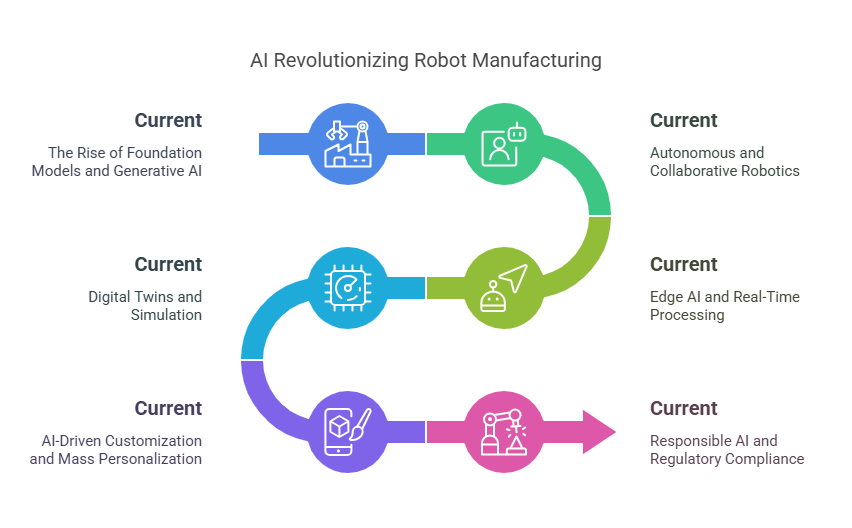
This example can be extended with more advanced reinforcement learning algorithms or integrated with real robot hardware for practical deployment.
Integration of AI agents with microservices
Next-Generation Programming: Working Side by Side with AI Agents
